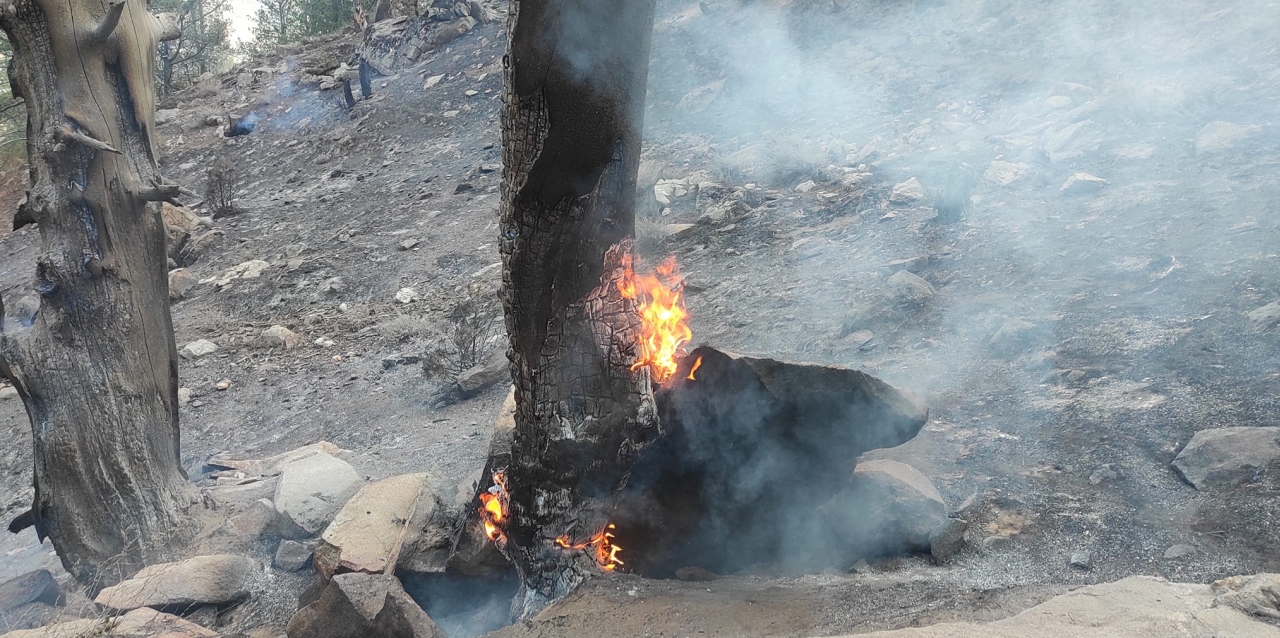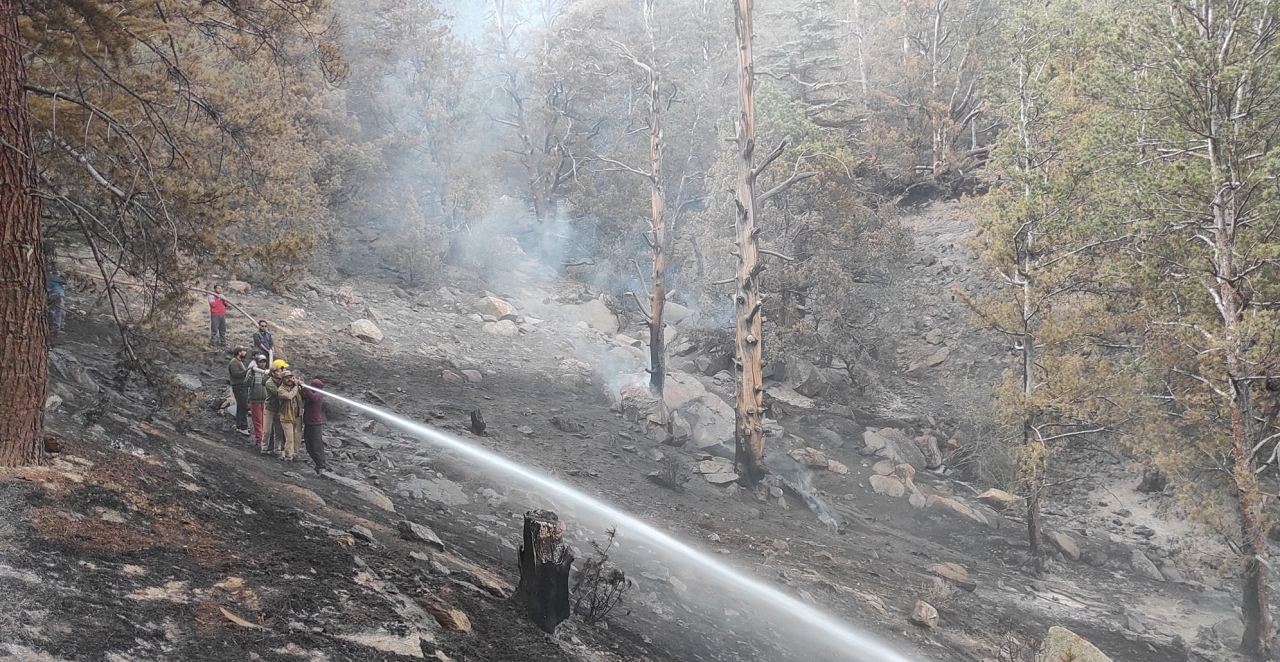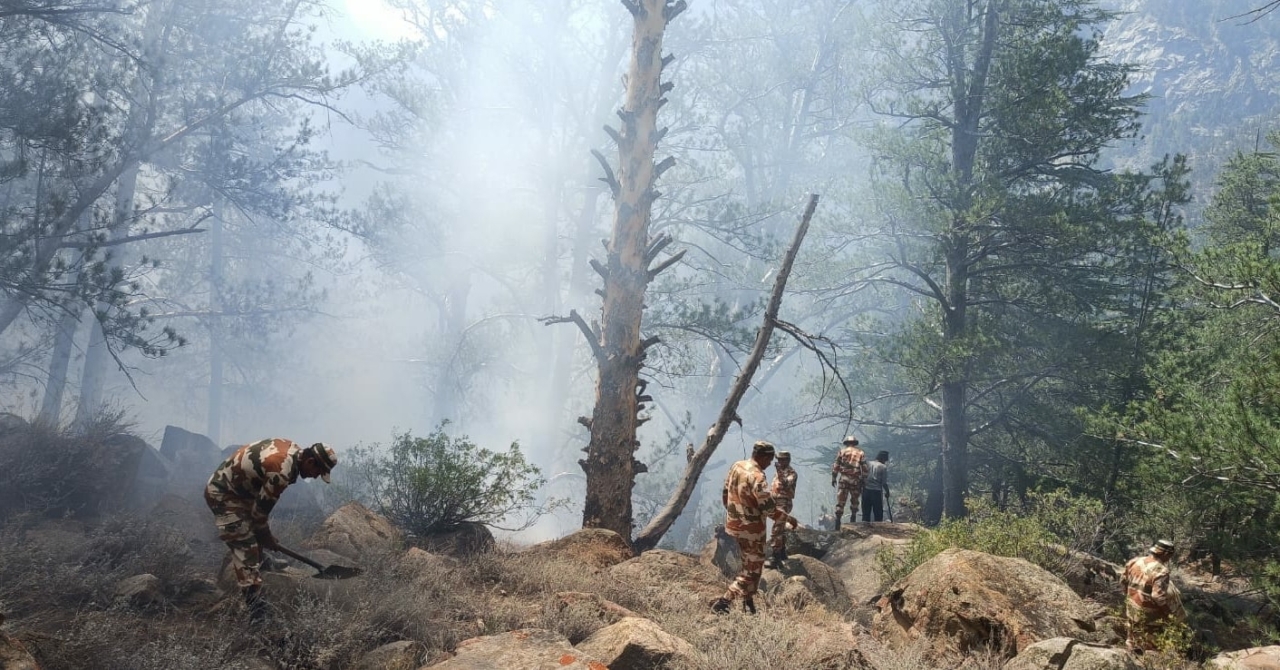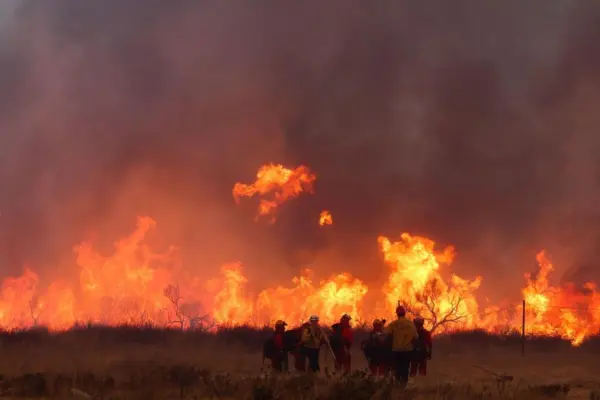Massive Forest Fire in Himachal’s Kinnaur Devours Chilgoza Trees and Other Flora
Amid intense heatwave and dry summer, Himachal Pradesh has been grappling with catastrophic wildfires that have destroyed hundreds of native trees over 2,000 bighas of land

Image: Facebook @Heer Chander Thakur
The past week has been one of the most devastating events where a devastating fire ravaged the Jangi Chilgoza forest in Himachal Pradesh’s Kinnaur district. The fire stretched for several kilometres and devoured the chilgoza pine forest, which is an important conifer and a cash crop in the Western Himalayas. The wildfire burned down 2,000 bighas of land with thousands of native chilgoza, juniper, and birch trees in the Akpa-Jangi region of the Pooh division.
While the endemic flora and fauna were being devoured by the raging fire, there was no major action taken by the government to tame the blaze despite the Indo-Tibetan Border Police being stationed there to protect the Indo-China border that lies ahead. Consequently, the country’s biggest chilgoza pine forests are burnt to crisp.

Image: Facebook @Heer Chander Thakur
Located at 1,800m to 3,000m above sea level, the forest is home to several crucial flora and fauna species, including deodar and blue pine trees along with the Himalayan tahr, the black bear and the blue sheep. Earlier the locals were afraid that these chilgoza forests might disappear with consistent hydropower project plants being developed in the region. However, the new threat emerged with an intensely dry summer and rainfall deficit during the spring in the state.
Apparently, Jangi village is one of the main sources of chilgozas in the country and it is the only conifer that bears highly nourishing edible nuts. This indigenous and socioeconomically important conifer is slow-growing with an average life of 150-200 years. With so many threats rearing their heads, the locals and conservationists are afraid that this tree species will soon go extinct.
According to Mahesh Negi, a member of Kyang, a group of climate and social activists from Kinnaur, the fire was contained with a joint effort from ITBP jawans, members of youth clubs from Jangi, Rarang, and Khadra, the forest department, and local administration. As per the local administration, the sparking in the HT electricity distribution line was the cause of the fire.

Image: Facebook @ITBP
According to Nature Watch India national convener Rajeshwar Negi;
This summer season, forest fires are a common sight across the state largely due to a lack of preventive steps taken by the Forest Department… Now the precious chilgoza pine forest is burning, and nobody is there to take care of it. It is the last stretch of the natural forest just ahead of the cold desert.
He further said that the state government should investigate the failure of the district administration to control the fire and seek the assistance of the state and central governments. Negi has also called for a detailed assessment of the loss and damage caused by the forest fire to flora and fauna.
जंगी (kinnaur) थितरी धार के समीप आग लग गया है।
अतः आप सभी साथियों से निवेदन है की जो कोई भी लोग अभी वहां जा कर मदद कर सकते हैं वो वहां जाएं।
.
.
.
.
.#kinnaur #Jangi #wildfire #Himachalpardesh pic.twitter.com/7d2LJaSXcU— Kyang (@Kyang43561780) June 11, 2022
The fire raged on for nearly a week. The locals tried to control and douse the fire on their own when no help from the administration showed up, but the scale of the fire was so large that couldn’t overcome it.
Day – 2 Fire in Jangi #kinnaur #Himachalpardesh pic.twitter.com/lBsIQ3s1tq
— Kyang (@Kyang43561780) June 12, 2022
Kinnaur deputy commissioner Abid Hussain Sadiq said;
The fire affected 2,000 bighas. The exact number of trees affected will be known after a few days as the fire has been controlled completely only on Wednesday. People from the administration, fire services, police, army, Indo-Tibetan Border Police, JSW Group and Central Industrial Security Force were deployed to help the local population of the adjoining Jangi and Akpa villages.
The state witnessed record episodes of forest fires this year. On average, 31 incidents of wildfires are being documented every day in Himachal Pradesh. Reportedly, there have been 340 forest fires since April 2, 2022, which is double the last year’s number and the highest in a decade. About 19,000 hectares of forests have been affected, causing damages of over Rs. 53 crore. The fires destroyed trees in more than 15,300 hectares of area.
While summer bush fires and forest fires are common occurrences, these incidents can be prevented with a little more preparedness and immediate action. Hopefully, the administration takes strict action against such incidents in the future so the precious biodiversity can be saved.
Via: Hindustan Times


